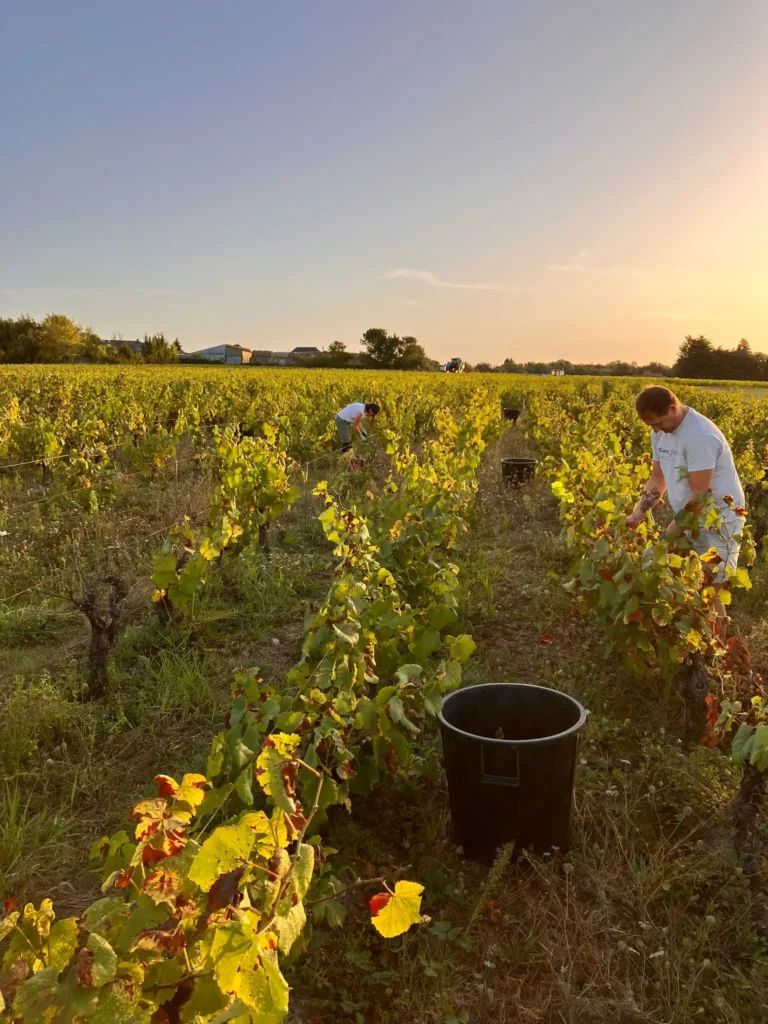Harvesting
by hand
During the harvest, the challenge is to pick the grapes at the right time. Observation and detailed knowledge of our plots, together with measurements and analyses of ripeness, enable us to decide on the right day for harvesting.
The proximity of our plots means that we can bring the freshest grapes back to the winery. We harvest by hand in buckets and then in racks, so there’s no need to crush the bunches, which are sorted directly in the vineyard.
Our working space offers us numerous possibilities for direct pressing with or without settling or maceration.


Native yeasts
We work to ensure the life and health of our vines. This energetic environment allows us to produce a healthy, dynamic wine. The week before the harvest, we pick beautiful bunches of grapes from all over the estate, as we move around the plots. The grapes are destemmed and vatted, fresh. Fermentation starts spontaneously and after a few days, we draw off the fermenting grape juice: this is the leaven.
Like a baker, we take a portion of this boiling juice each day to seed our vats. The leaven is supplemented with fresh juice to maintain and restart the fermentation process.
This artisan choice is motivated by the desire to make the most of our terroir.
Cellars
Our winery is in the Nantes tradition: most of the vats are underground. Their capacity ranges from 23 hL to 95 hL. The floor is dotted with hatches giving access to the concrete vats, which have tiled or glazed walls. This configuration frees up a great deal of space, enabling the wine to be matured on its lees in the most appropriate and high-quality way.
600-litre demi-muids are used for vinification and ageing of our Folle Blanche and red wine macerations.
Our 500-litre stoneware jars, white because they are rich in Limoges kaolin, are used for our exceptional cuvées, for which micro-oxygenation throughout the maturing process is essential.
Finally, the winery is completed by stainless steel and concrete vats, modern and perfect for the vinification and ageing of our red wines.


Ageing
Once fermentation is complete, we close the vats and let time do its work. The yeasts have finished their work and slowly settle to the bottom to form the lees. We sometimes stir the lees in a vat during the winter, in other words, put the lees back into suspension to enrich the wine.
Throughout the ageing process, which lasts from 6 months to over 2 years, we intervene regularly … by tasting! It’s our way of keeping a close eye on our wines and getting to know them well.
Bottling
From the spring following the harvest, the wines are bottled one after the other. When the tasting confirms it, and sometimes after long discussions and reflections on the blends, we decide on the bottling date.
This crucial stage is the final act in our work as artisan winemakers. With the greatest respect for the wine, bottling takes place on the fruit day or the flower day, under inert gas and in good spirits!

Follow us
on Instagram !
Every time we meet you, we share some news about the estate and its development. On a weekly basis, we communicate on social networks, aiming to deliver content that allows readers to understand a little more about the story behind each bottle of wine.
🇫🇷 La vigne, c`est aussi une histoire de machines 🚜.
Nos bons vieux tracteurs nous donnent parfois du fil à retordre. On les aime, ils nous rendent bien des services.
La vie est belle quand on a 50 ans !
🇺🇸 Winegrowing is also about machinery.
Our trusty old tractors sometimes give us a hard time. We love them, they serve us well.
Life is good when you`re 50!
#lestroistois #vertou #winemaker #vigneronindependant #domaineviticole #agriculturebiologique #tracteur #vinsnaturels

🇫🇷 Le Muscadet se déguste, se partage et se célèbre 🍷
Nous serons présents au Salon du Muscadet chez @marietta_nantes !
On vous invite vendredi 10 octobre à célébrer la richesse de notre terroir et (re)découvrir toute la diversité du Muscadet dans une ambiance chaleureuse.
Au programme :
🍷 10 crus communaux du Muscadet à découvrir et déguster
🕚 Dégustation de 11h à 19h pour explorer toutes les facettes du Muscadet
🤝 Après 19h, poursuivez l’échange et le partage avec les vignerons présents
📍 Marietta – Nantes
11 rue de la Tour d`Auvergne, Nantes
Réservez vite votre place et rejoignez-nous pour cette journée d’exception !
Vous y serez, nous y serons.
🇺🇸 Muscadet is meant to be tasted, shared, and celebrated 🍷
We will be at the Muscadet Show at Marietta!
We invite you on Friday, October 10, to celebrate the richness of our terroir and (re)discover the diversity of Muscadet in a warm atmosphere.
On the program:
🍷 10 Muscadet communal wines to discover and taste
🕚 Tasting from 11 a.m. to 7 p.m. to explore all the facets of Muscadet
🤝 After 7 p.m., continue the exchange and sharing with the winemakers present
📍 Marietta – Nantes
11 rue de la Tour d`Auvergne, Nantes
Reserve your place quickly and join us for this exceptional day!
You`ll be there, we`ll be there.
#lestroistoits #vertou #vignoblenantais #winelover #winemaker #muscadet #VinsdeNantes #salonduvin #SalonDuMuscadet #Muscadet #CrusCommunaux #Vignerons #Nantes

🇫🇷 Clap de fin pour les vendanges 2025 🍇.
Toutes nos grappes ont rejoint les cuves après une récolte riche en contrastes : ensoleillée , humide , exigeante mais splendide.�
Un vrai marathon pour nos équipes, rempli d’intensité, d’effort et de magie.
Mais ne vous y trompez pas : ce n’est que le début !�
La fermentation et la macération battent leur plein, chaque cuve demandant toute notre attention.
Alors que les jours raccourcissent et que l’air se rafraîchit, le vigneron se plonge désormais dans l’univers du chai… là où naissent les premiers jus et les futurs assemblages.
🇺🇸 Clap for the end of the 2025 harvest.
All our grapes have been transferred to the vats after a harvest rich in contrasts: sunny, wet, demanding but splendid.�
A real marathon for our teams, filled with intensity, effort, and magic.
But make no mistake: this is only the beginning!
Fermentation and maceration are in full swing, with each vat demanding our full attention.
As the days grow shorter and the air grows cooler, the winemaker now immerses himself in the world of the cellar... where the first juices and future blends are born.
#lestroistois #vertou #winemaker #vigneronindependant #domaineviticole #agriculturebiologique #vignoblenantes #millesime2025 #vendanges #vendanges2025 #harvesttime @les_extra_terrestres

🇫🇷 Ils se sont fait attendre… et les voilà enfin ! 🍇
Nos grappes de raisins rouges se lancent cette année dans un véritable concours de muscles : généreuses, denses et pleines de promesses.
Plantés sur notre parcelle en agroforesterie, ces jeunes ceps révèlent déjà toute la richesse du travail agronomique mené au Domaine Les Trois Toits.
Le résultat ? Des raisins d’une qualité exceptionnelle, annonciateurs de cuvées qui feront honneur à vos plus beaux dîners.
Un vrai chef-d’œuvre de la vigne, que nous avons hâte de partager avec vous !
🇺🇸 They took their time arriving... but here they are at last! 🍇
This year, our red grape clusters are entering into a veritable contest of strength: generous, dense, and full of promise.
Planted on our agroforestry plot, these young vines already reveal the richness of the agronomic work carried out at Domaine Les Trois Toits.
The result? Grapes of exceptional quality, heralding vintages that will do honor to your finest dinners.
A true masterpiece of the vineyard, which we can`t wait to share with you!
#lestroistois #vertou #winemaker #vigneronindependant #domaineviticole #agriculturebiologique #vignoblenantes #millesime2025 #vendanges #vendanges2025 #harvesttime @les_extra_terrestres

🇫🇷 Les vendanges 2025 battent leur plein au Domaine Les Trois Toits ! 🍇
Notre cépage fétiche, le melon de Bourgogne, est désormais entièrement récolté, pressé et déjà en pleine fermentation. Ce millésime 2025 s’annonce d’une grande richesse et promet des cuvées d’exception.
Amateurs de nos cuvées Muscadet, Phileas, La Plage ou Rooftop, préparez vos papilles… Quelque chose de beau se prépare dans nos chais !
Un grand bravo à notre équipe de vendangeurs, qui se plient en quatre (et surtout en deux 😉 ) pour ramasser chaque grappe à la main - une garantie de qualité que vous retrouverez bientôt dans vos verres.
Et ce n’est pas fini : nos raisins rouges arrivent à maturité et ne vont pas tarder à rejoindre la fête.
Restez connectés pour la suite de l’aventure !
🇺🇸 The 2025 harvest is in full swing at Domaine Les Trois Toits! 🍇
Our favorite grape variety, Melon de Bourgogne, has now been fully harvested, pressed, and is already in full fermentation. The 2025 vintage promises to be rich and exceptional.
Fans of our Muscadet, Phileas, La Plage, and Rooftop wines, get your taste buds ready... Something wonderful is coming out of our cellars!
A big congratulations to our team of harvesters, who bend over backwards (and especially double over 😉 ) to pick each bunch by hand—a guarantee of quality that you will soon find in your glasses.
And that`s not all: our red grapes are ripening and will soon be joining the party.
Stay tuned for the rest of the adventure!
#lestroistois #vertou #winemaker #vigneronindependant #domaineviticole #agriculturebiologique #vignoblenantes #millesime2025 #vendanges #vendanges2025 #harvesttime @les_extra_terrestres

Subscribe to our newsletter !
In addition, we create a newsletter, which we publish 5 times a year, to share our news with those of you who prefer to sit back and read.
Enjoy your reading, stay tuned and keep in touch.




